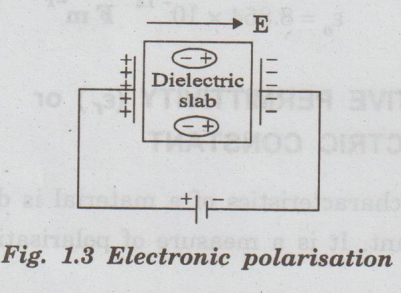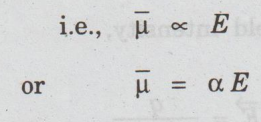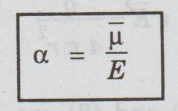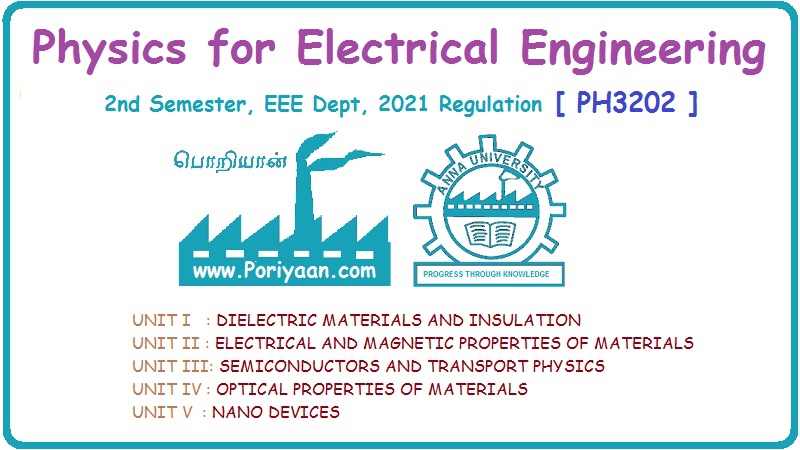Physics for Electrical Engineering: Unit I: Dielectric Materials and Insulation
Matter Polarisation - Electronics Polarisation
Definition, Formula
The electrical behaviour of a dielectric material can be changed by the application of an external electrical field.
MATTER POLARISATION - Electronics Polarisation
The electrical behaviour of a dielectric material can be changed by the application of an external electrical field.
When an external electrical field is applied to a dielectric, it exerts a force on both positive and negative-charged particles of each atom present in the dielectric material.
The positive charges are pushed in the same direction as that of the electrical field while negative charges are pushed in the opposite direction. (fig. 1.3)

Consequently, the centres of positive and negative charges of each atom are displaced from their equilibrium positions in opposite directions.
This displacement of electrical charges produces local dipoles or electrical doublet throughout the dielectric. Now, the dielectric is said to be polarised.
Definition
The process of producing electrical dipoles inside the dielectric by the application of an external electrical field is called polarisation in dielectrics.
Polarisability (α)
It is found that the average dipole moment (![]() ) of a system is proportional to the applied electric field (E).
) of a system is proportional to the applied electric field (E).

where α is proportionality constant and it is known as the polarisability.

Polarisability is defined as the ratio of average dipole moment to the electric field applied. Its unit is farad m2 or Fm2.
Physics for Electrical Engineering: Unit I: Dielectric Materials and Insulation : Tag: : Definition, Formula - Matter Polarisation - Electronics Polarisation
Related Topics
Related Subjects
Physics for Electrical Engineering
PH3202 2nd Semester 2021 Regulation | 2nd Semester EEE Dept 2021 Regulation
